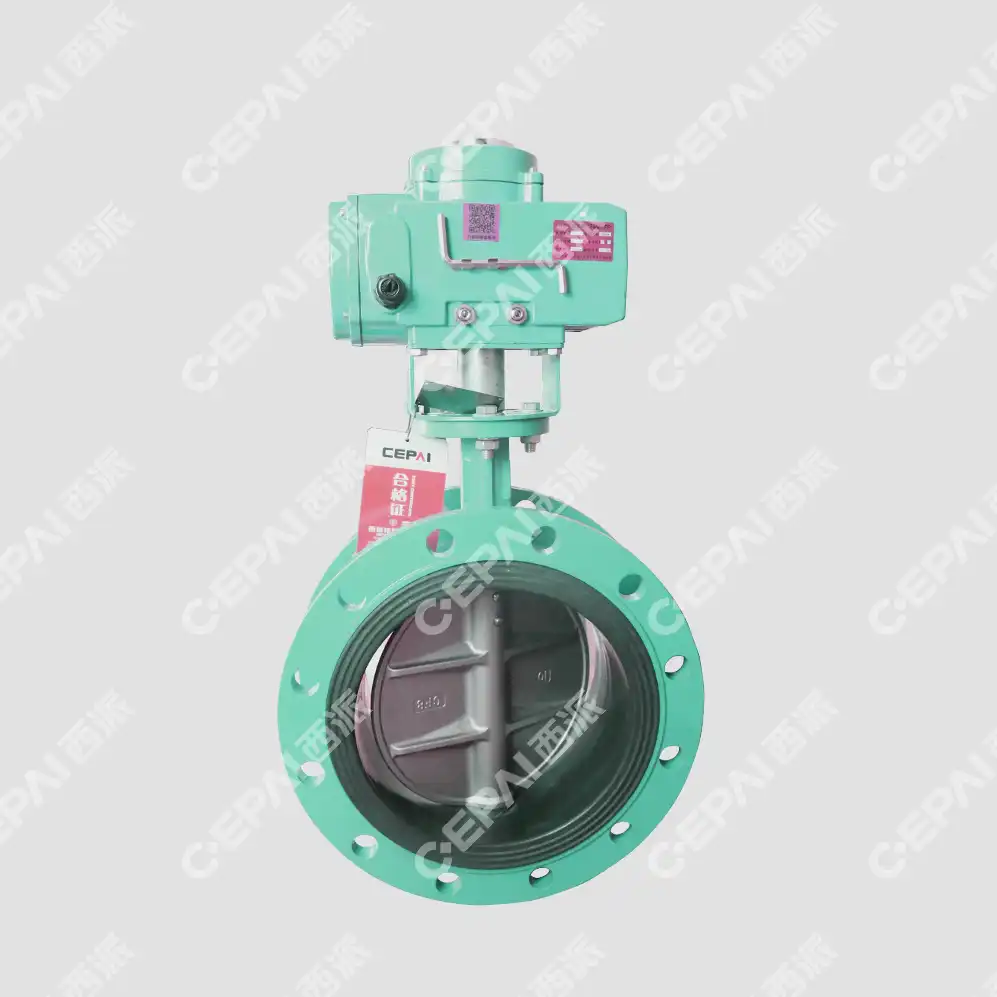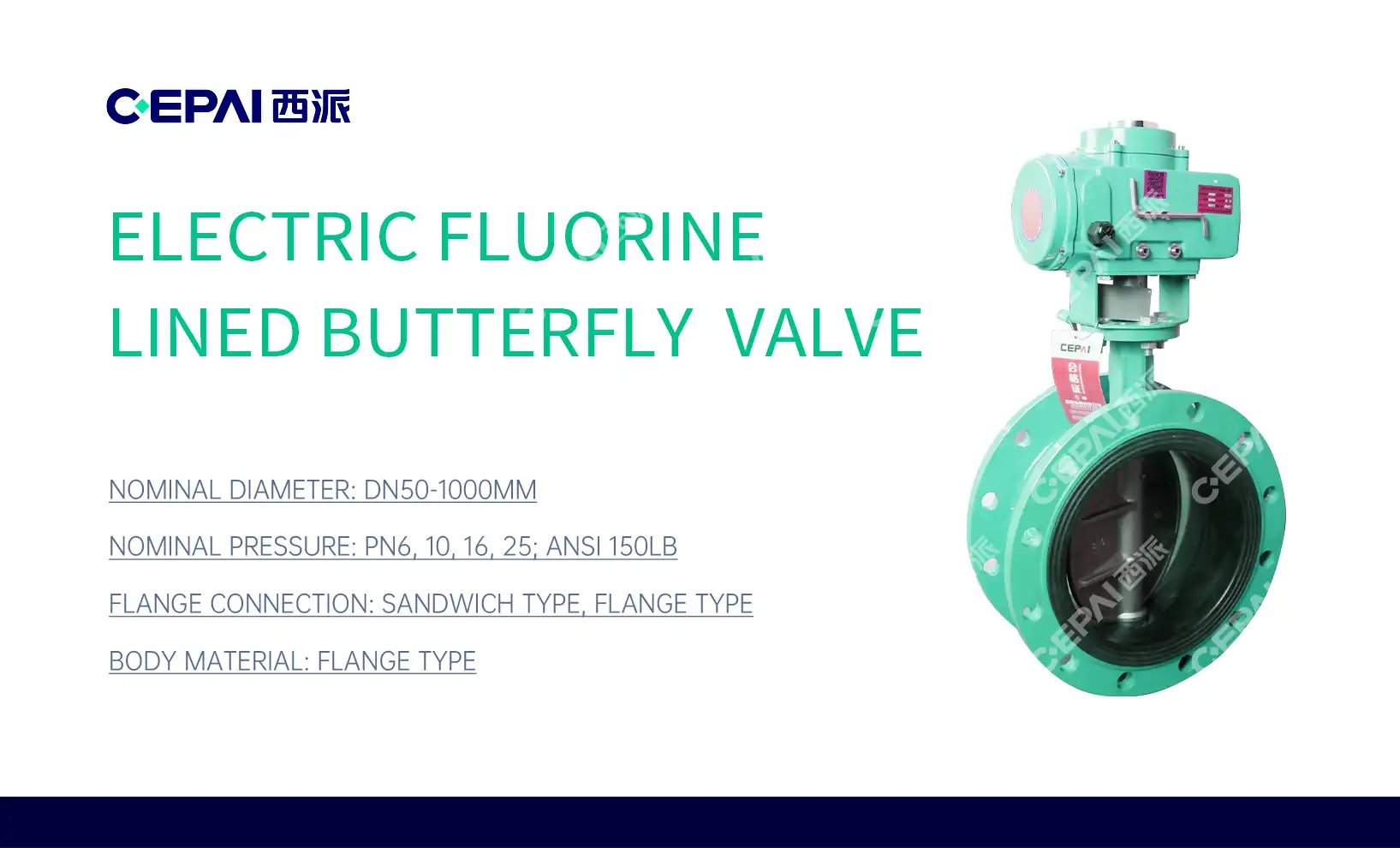Understanding Electric Butterfly Valves
Operational Principles of Electric Butterfly Valves
Electric butterfly valves utilize an electric actuator to control the valve's disc position. This device is easily integrated into automated systems and provides for exact flow adjustment. To move the valve disc to the specified location, the actuator takes electrical energy and turns it into mechanical motion. Electric butterfly valves are ideal for applications requiring precise adjustments due to its design, which allows for effortless operation and precise flow control.
Advantages of Electric Butterfly Valves
There are a number of applications where electric butterfly valves are used due to their many advantages. Their ability to precisely regulate flow is vital in procedures that require precision, and their control capabilities make this possible. These valves are energy-efficient, consuming power only during actuation, which can lead to significant energy savings over time. Additionally, electric butterfly valves are relatively quiet during operation, making them ideal for noise-sensitive environments. They make the framework simpler to handle and more productive by and large. They too work with computerized control frameworks, which makes them simple to include to cutting edge computerization establishments.
Limitations of Electric Butterfly Valves
Despite their advantages, electric butterfly valves have certain limitations. One potential downside in situations when the valve needs to operate quickly is their slower response time when compared to pneumatic valves. The initial cost of electric butterfly valves tends to be higher due to the complexity of the electric actuator. In environments with extreme temperatures or potentially explosive atmospheres, special considerations and additional safety measures may be necessary for the electrical components, potentially increasing complexity and cost.
Exploring Pneumatic Valves
Working Mechanism of Pneumatic Valves
Pneumatic valves operate using compressed air or gas to actuate the valve mechanism. This compressed air is directed to either side of a piston or diaphragm, causing the valve to open or close. Simply put, this design makes pneumatic valves more reliable and long-lasting. By using air as the working medium, pneumatic valves don't need any electrical parts. This means they can be used in dangerous or deadly places where electrical sparks could be a problem.
Benefits of Pneumatic Valves
One of the best things about pneumatic valves is how quickly they can respond. Because they can be activated quickly, they are perfect for uses that need to cycle quickly or shut down in an emergency. Pneumatic valves are known for being reliable and able to work in difficult conditions, such as places with high temperatures and acidic liquids. They usually cost less to buy than electric valves, which makes them a good choice for many situations where cost is an issue. Because pneumatic systems are simple, they are often easier to maintain and fix problems with. This could cut down on downtime and upkeep costs.
Drawbacks of Pneumatic Valves
While pneumatic valves offer many benefits, they also have some limitations. The need for a compressed air supply system makes the whole setup more complicated and increases the number of places where something could go wrong. This condition can also make things use more energy because compressors have to keep running all the time to keep the air pressure steady. When it comes to controlling flow, pneumatic systems might not be as accurate as electric actuators. This could be a problem in situations where small changes are needed. Leaks in the system that let air in can also make it less efficient and cost more to run over time.
Comparative Analysis: Electric Butterfly Valves vs Pneumatic Valves
Performance in Various Industrial Applications
The choice between electric butterfly valves and pneumatic valves often depends on the specific requirements of the industrial application. You can precisely control flow and work with computers with electric butterfly valves. Like in water treatment, chemical processes, and HVAC systems, where exact control is important, they work really well. However, pneumatic valves work best in situations where they need to be cycled quickly or where they need to be used in dangerous places. They're often used in factories, food processing plants, and the oil and gas business, where it's important to act quickly and reliably in bad weather.
Cost Considerations: Initial Investment vs Long-term Operation
When evaluating the cost-effectiveness of electric butterfly valves versus pneumatic valves, it's essential to consider both initial investment and long-term operational expenses. Electric butterfly valves typically have a higher upfront cost due to the complexity of their actuators. Their low energy use, on the other hand, can mean lower running costs over time, especially in situations where valves need to be adjusted often. Pneumatic valves usually have a lower starting cost, which makes them a good choice for projects that need to stick to a budget. Long-term operational costs can go up, though, because of the costs of keeping a compressed air system and the energy that could be lost through leaks. When choosing between the two, people often have to weigh their short-term budget needs against their plans to save money in the long run.

Maintenance and Reliability Comparison
Maintenance requirements and overall reliability are crucial factors in valve selection. Electric butterfly valves benefit from having fewer moving parts in their actuators, which can reduce wear and tear. Their ability to work with digital control systems makes it easier to keep an eye on them and plan ahead for upkeep. When problems do happen, though, fixing electric motors might need special skills. Pneumatic valves are known for being strong and able to work in rough situations. Because they have a simpler mechanism, they are often easier to maintain and fix, which can be helpful in places where specialised electrical knowledge isn't easily available. Both valve types can offer high reliability when properly maintained, but the specific operating conditions and available maintenance resources should guide the final choice.
Conclusion
The choice between electric butterfly valves and pneumatic valves depends on the particular needs of the thing, the working conditions, and the long-term objectives. Electric butterfly valves are exact and utilize small vitality, which makes them culminate for applications that require to be controlled precisely and work with current robotization frameworks. Pneumatic valves are great for industries that need to move quickly and work in dangerous areas because they are reliable and respond quickly. In order to make the best choice for performance, efficiency, and cost-effectiveness in your fluid control uses, you should weigh the pros and cons of each valve type against the specific needs of your system.
Contact Us
For expert guidance on selecting the right valve for your specific needs, contact CEPAI Group. Our team of specialists can provide tailored solutions to enhance your operational efficiency and system performance. Reach out to us at cepai@cepai.com to explore how our advanced valve technologies can benefit your projects.


_1746598525968.webp)



